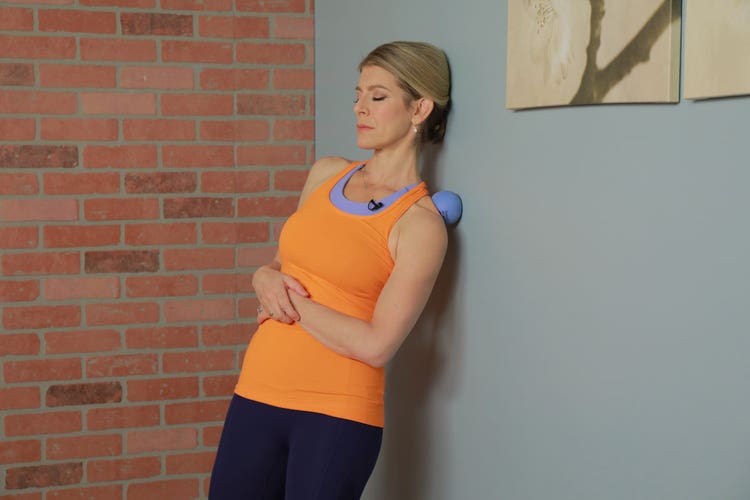Light Up Your Blind Spots

Three moves can help you develop a better body sense.
When was the last time you thought about your body in space? Proprioception, or our body’s sense of its own position, is essential to moving through the world, but it’s something most of us take for granted. And the diaphragm (the powerful muscle that’s central to breathing) and the scapula (part of the shoulder complex) are out of sight and therefore out of mind. Celebrity fitness and self-care expert Jill Miller has three simple techniques to help develop a sense of these.
To get started, you’ll need one Therapy Ball PLUS.
Scapula Scalpel
https://www.youtube.com/watch?v=t3jdCJh04v8
Equipment: Therapy Ball PLUS
Each one of us has a body part (or two) that seems to elude detection. No matter how much we exercise it, we still don’t really feel connected to it. Some body parts just seem lost inside our own skin. I can help you find one of those parts that has a way of hiding for many of my students: the scapula, also known as the shoulder blade. The bone is mostly behind you, and a Therapy Ball PLUS massaging the tissues around it improves your inner “GPS” via proprioceptors, giving your brain feedback about the scapula’s location.
- Place the Therapy Ball PLUS between your shoulder blade and a wall.
- Bend your knees slightly and lean against the ball, moving slowly to roll it around the outline of your scapula and adding more or less pressure as you can tolerate it.
Standing Diaphragm Vacuum
https://www.youtube.com/watch?v=YJxuyXs6vSQ
Equipment: None
One of the most hidden muscles of the body is the diaphragm. This move helps you locate your diaphragm by deliberately “losing your breath” through complete exhalation. It also helps you to connect to an inside-out stretch of your deep postural and lower back muscles—tissues that often cause pain due to a lack of full range of motion.
- Inhale and reach overhead, linking your thumbs together.
- Exhale completely, and stretch your ribs apart.
- Repeat several times.
Find Your Blind Spot: Hips
https://www.youtube.com/watch?v=qJyEggwJU74
Equipment: None
When was the last time you exercised or stretched with your eyes closed? How often do you train your vestibular system—basically, your body’s true balance system? As a species, our biggest blind spot is seeing in the dark. So this exercise puts you to the task of finding dynamic balance in your hips, without using your eyes.
- Stand with your spine and core neutral.
- Close your eyes or tie a blindfold over them.
- Bend your knees, balance on your right foot and begin to bend forward.
- As you bend forward, reach your hands toward the floor, and keeping your left leg bent, lift it behind you.
- Touch the floor in front of you, and return to standing.
- Repeat, balancing on your left foot.
Photography/Videography: Todd Cribari, inspirostudio.com
Hair and Make-up: Mariah Nicole, mariahnicole.com